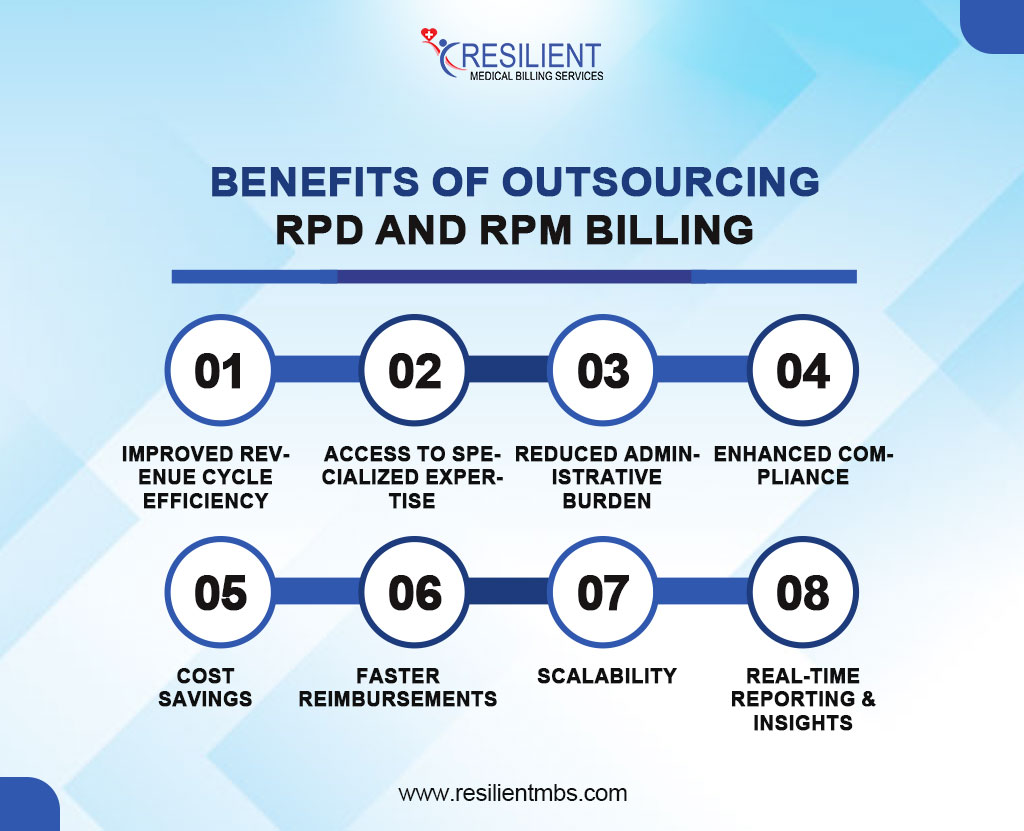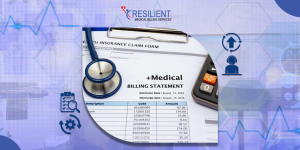Accurate billing isn’t just a back-office job in today’s rapid healthcare world; it’s necessary to keep practices running smoothly. Providers can use medical billing services to submit insurance claims, get paid on time, and keep accurate financial records. Remote Patient Data (RPD) and Remote Patient Monitoring (RPM), on the other hand, have made bills more difficult than ever.
What does this mean for companies and people who work in billing, then? It is now important to know how RPD and RPM affect the payment process to stay efficient, in compliance, and financially healthy.
This blog post will explain what RPD and RPM services in medical billing are, how they’re changing medical bills, and why it’s important to stay up-to-date in the rapidly changing world of healthcare today.
What are RPM Services in Medical Billing?
Remote Patient Monitoring (RPM) refers to the use of digital technologies to monitor and collect medical data from patients outside of a traditional clinical setting. Using wearable sensors, mobile health apps, and linked equipment, RPM lets healthcare providers track patients’ vital signs, glucose levels, blood pressure, and other health variables in real time.
This service helps manage chronic illnesses, post-operative care, and patient wellness by providing continual oversight without health facility visits.
RPM in Healthcare
Remote Patient Monitoring (RPM) enables healthcare providers to track patients’ health in real time, leading to early detection of issues, reduced hospital readmissions, and improved outcomes. It supports data-driven decisions through continuous patient data, offering patients fewer in-person visits and greater peace of mind.
For billing, RPM involves specific CPT codes and reimbursement protocols. Providers must understand these codes, payer requirements, and guidelines to ensure proper compensation for services rendered.
What Are RPD Services in Medical Billing?
Remote Patient Data (RPD) services are an essential component of modern healthcare that allow medical professionals to collect, manage, and analyze patient data remotely. RPD services help healthcare providers monitor patients’ health, especially those with chronic diseases requiring regular observation.
These services use technology to send vital signs, blood pressure, glucose levels, and heart rate from the patient’s home to healthcare providers for review and treatment.
Key Differences Between RPM and RPD in Medical Billing
Tracking patient data remotely is part of both Remote Patient Monitoring (RPM) and Remote Physiological Data (RPD) systems, but they are not the same.
RPM focuses on constantly checking bodily data, like blood pressure or glucose levels, mostly for people who have long-term illnesses.

However, RPD looks at a wider range of factors, including both clinical and non-clinical data, such as patient-reported outcomes, drug adherence, and behavioral health metrics. This gives a more complete picture of a patient’s health.
When it comes to payment, RPM services use clear CPT codes to get paid, while RPD services may need different codes depending on the type of data and technology used. It is important to understand these changes so that you can send accurate bills and get the right amount of money back.
Remote Patient Monitoring CPT Codes and Remote Patient Monitoring Reimbursement
Remote Patient Monitoring (RPM) is defined and compensated using CPT codes. These codes indicate the services provided, including monitoring time, data type, and care management complexity.
Key CPT codes for RPM services are:
CPT Code 99457: This code is used for remote monitoring services that involve the interpretation of patient data and care coordination, typically requiring 20 minutes of clinical time spent on the patient’s care within a 30-day period.
CPT Code 99458: This code is an add-on code that extends the services covered under CPT 99457, billing for each additional 20 minutes spent on patient care coordination.
CPT Code 99453: This code is used for the initial setup of remote monitoring equipment and the patient’s training on how to use it.
How Remote Patient Monitoring CPT Codes Are Used in Medical Billing
Watching over patients from afar for accurate billing of remote patient monitoring, CPT codes are needed. These codes are used to submit insurance claims for remote patient monitoring time and resources. Healthcare providers must meet service standards, including monitoring and patient communication time, while utilizing these codes.
Remote patient monitoring CPT codes help avoid billing problems and ensure coding compliance. When evaluating data and coordinating care with patients, healthcare workers use CPT 99457 and 99458 codes. These codes can be billed with office visits and chronic care management to show the complete spectrum of care.
Benefits of Outsourcing RPD and RPM Billing
- Improved Revenue Cycle Efficiency: Simplified billing processes reduce claim denials and accelerate reimbursements.
- Access to Specialized Expertise: Professional billing teams stay updated with CPT codes and compliance guidelines.
- Reduced Administrative Burden: Frees up internal staff to focus on patient care rather than paperwork.
- Enhanced Compliance: Minimizes errors and ensures adherence to CMS regulations and payer policies.
- Cost Savings: Eliminates the need for in-house billing infrastructure and training expenses.
- Faster Reimbursements: Timely claim submissions lead to quicker payments and improved cash flow.
- Scalability: Easily handle increased patient volume without overwhelming internal resources.
- Real-Time Reporting & Insights: Gain better visibility into financial performance with detailed analytics.
How RPD and RPM Improve Patient Care and Billing Accuracy
Enhanced Patient Care
RPD and RPM enable real-time monitoring through connected devices, allowing earlier interventions, better chronic care, and fewer ER visits, which lead to improved outcomes and patient satisfaction.
Improved Billing Accuracy
Automated data capture reduces manual errors, supports accurate coding, and speeds up reimbursements, ensuring compliance and minimizing claim denials.
Closing Thoughts!
RPD and RPM services are important in today’s healthcare system because they provide constant monitoring, better patient outcomes, and easier billing. By combining these tools, providers can make claims that are more accurate, get paid faster, and run their businesses more efficiently.
By giving RPD and RPM bills to a reputable partner, you can be sure of accuracy and compliance, and your team can focus on providing excellent care.
Contact Resilient MBS now to enhance your revenue cycle performance and simplify your RPD and RPM billing systems. Our staff of experienced billing experts is eager to help your firm flourish and knows the nuances of remote patient monitoring.
Visit Resilient MBS or call us to learn more!










